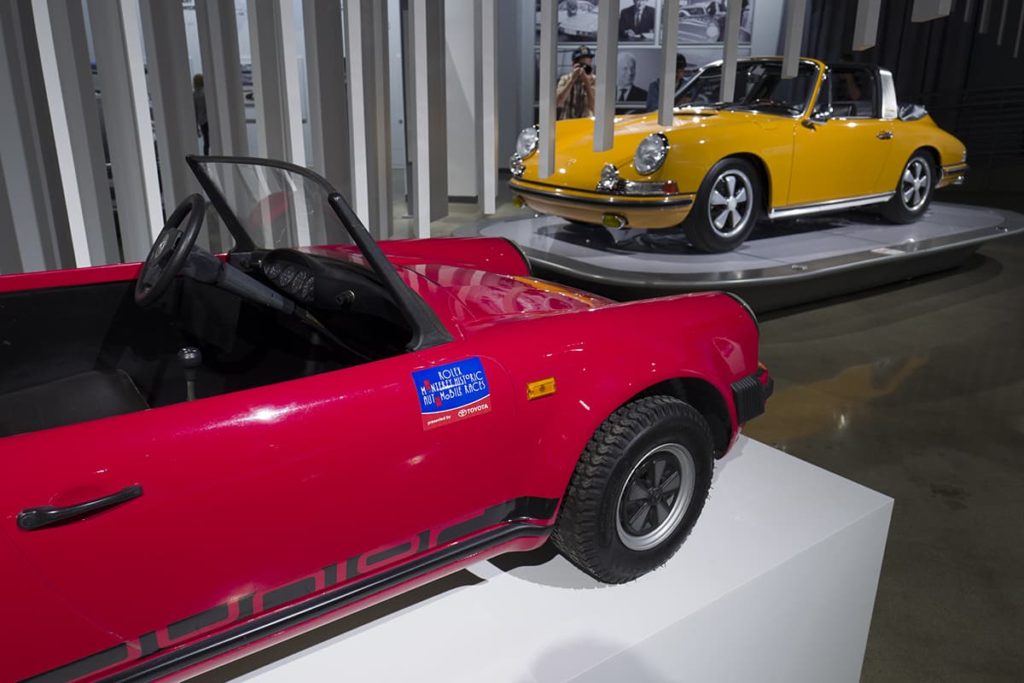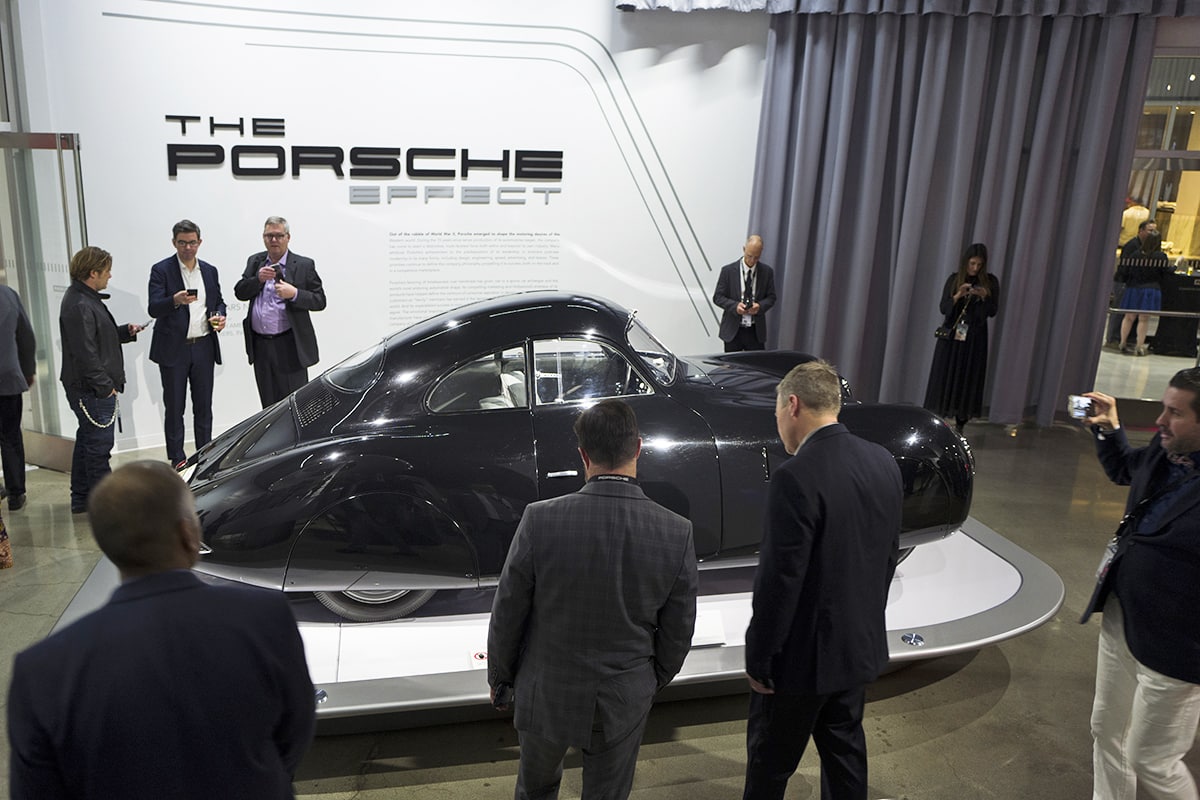Whether you live in L.A. or are contemplating a visit, there’s a special exhibit there that’s not to be missed. “The Porsche Effect” at the Petersen Automotive Museum along the city’s Miracle Mile will knock your socks off. Back in 2016, Petersen Vice Chairman Bruce Meyer suggested a comprehensive Porsche show to Wolfgang Porsche, the son of Ferry Porsche. Meyer remembers it this way: “Wolfgang was touring the museum, and we went through the Bugatti exhibit, and I said, ‘This could all be Porsches. What a great way to celebrate your 70th anniversary.’”
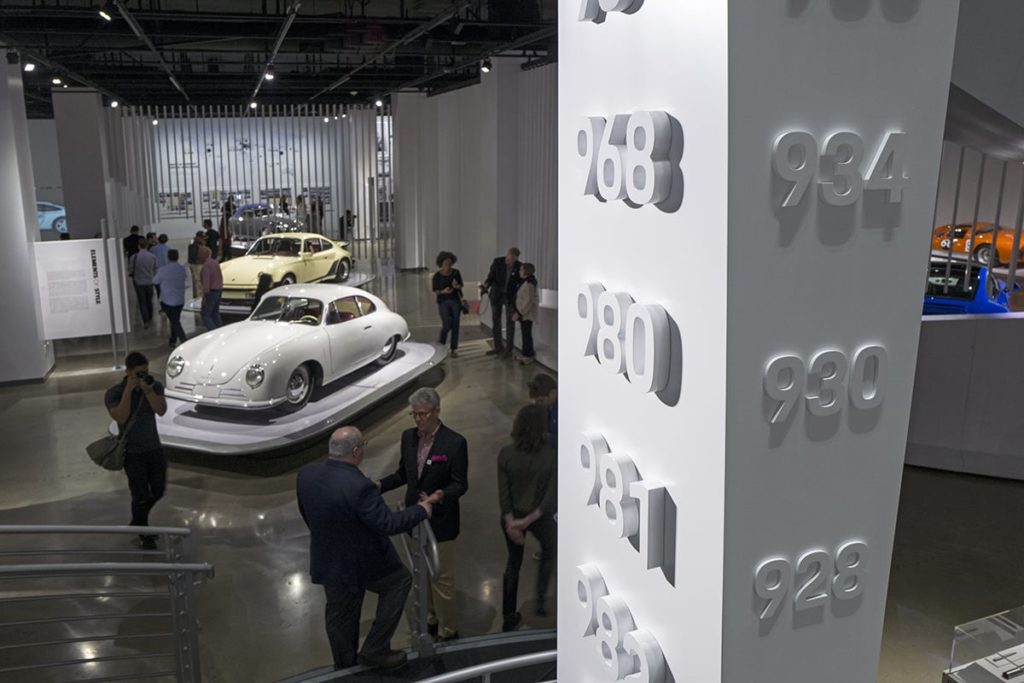
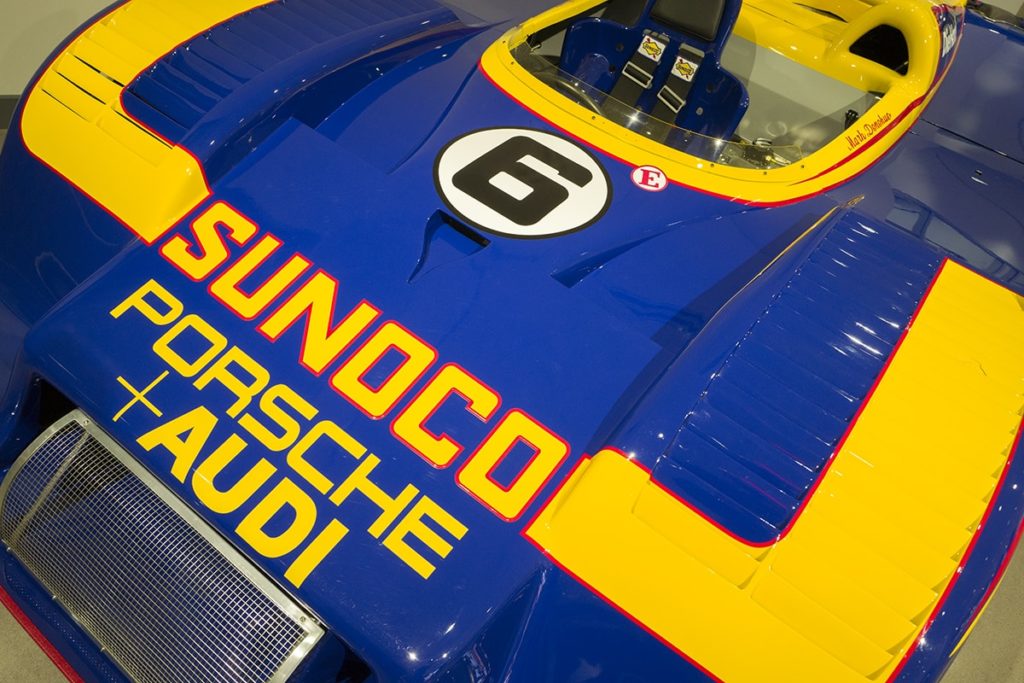
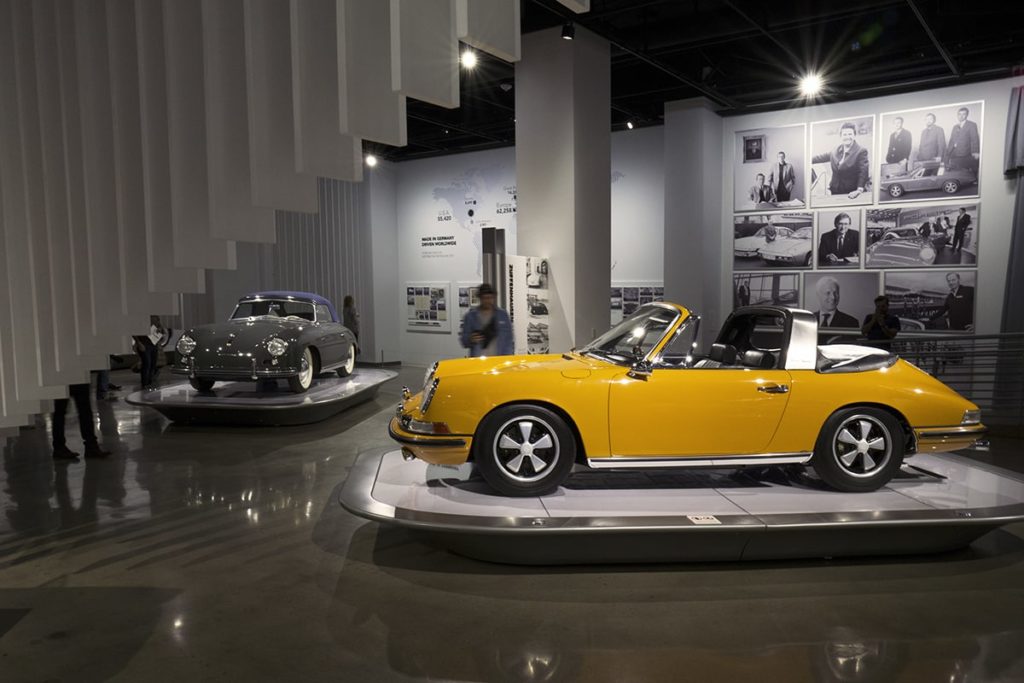
The result was “The Porsche Effect”, a quintessential show designed to capture the innovative and iconic spirit of Porsche. To ensure every visitor feels the excitement of this undertaking, the Petersen invited the best road and race cars from private collections around the globe. They also built a special setting in their Mullin Family Grand Salon to optimize the effect. Of course, there will always be an element of excitement when it comes to Porsche and its sport cars – whether it’s a 356 Speedster, a 911 Turbo, or the latest 918 hybrid. Fortunately, each of these iconic Porsches, and 47 more, is available to view now until January 27, 2019. Themes for the exhibit include “Elements of Style”, “Zuffenhausen and Beyond”, “Extended Families”, “Innovation through Competition”, and “Word/Image/Object”.
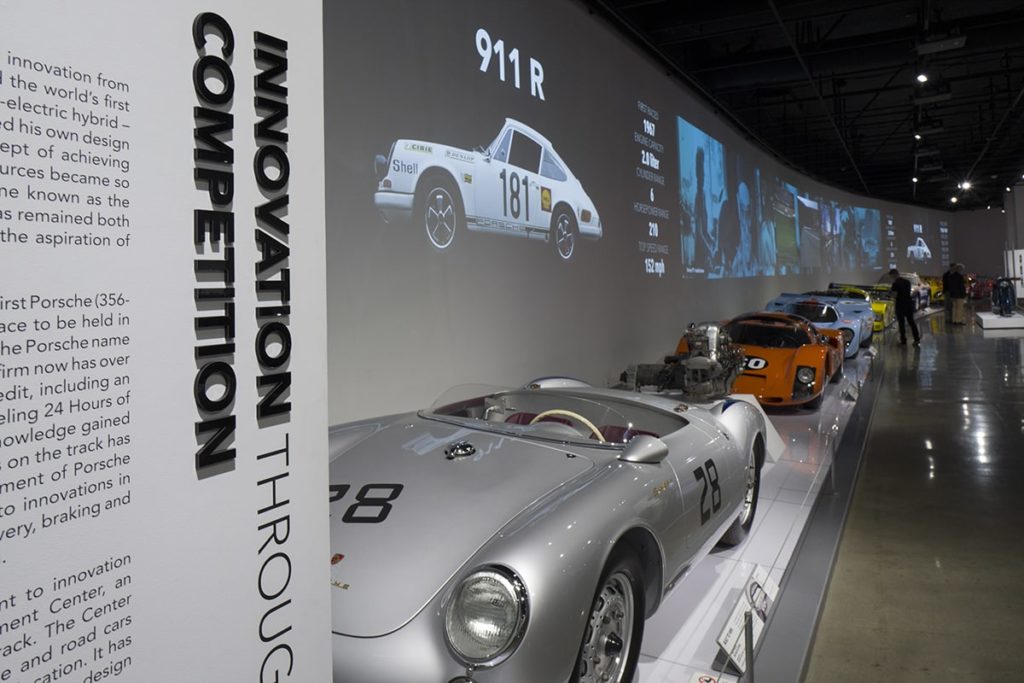
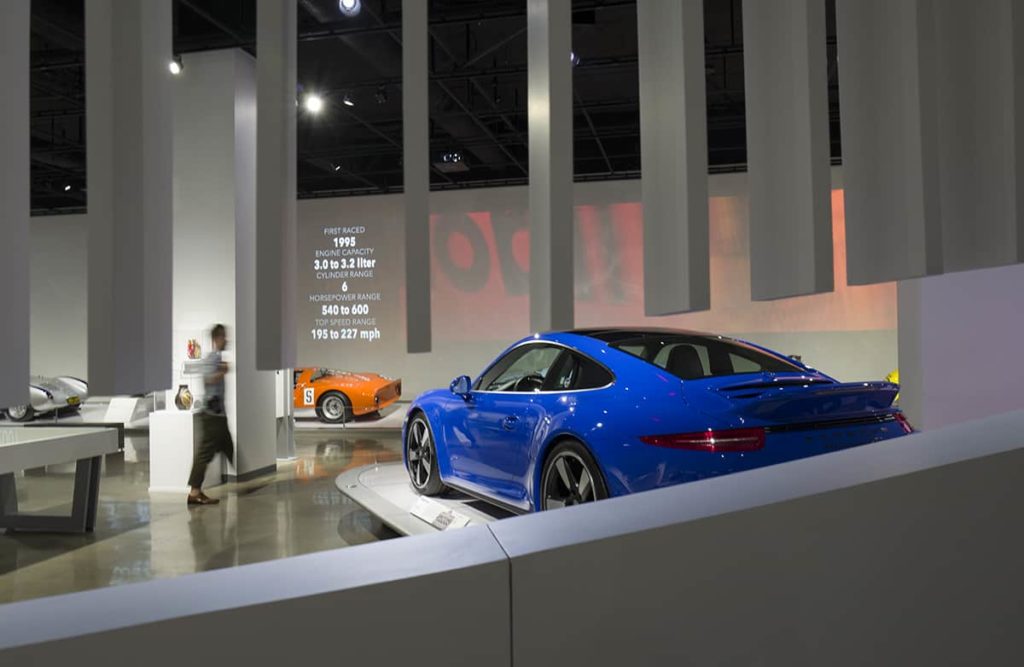
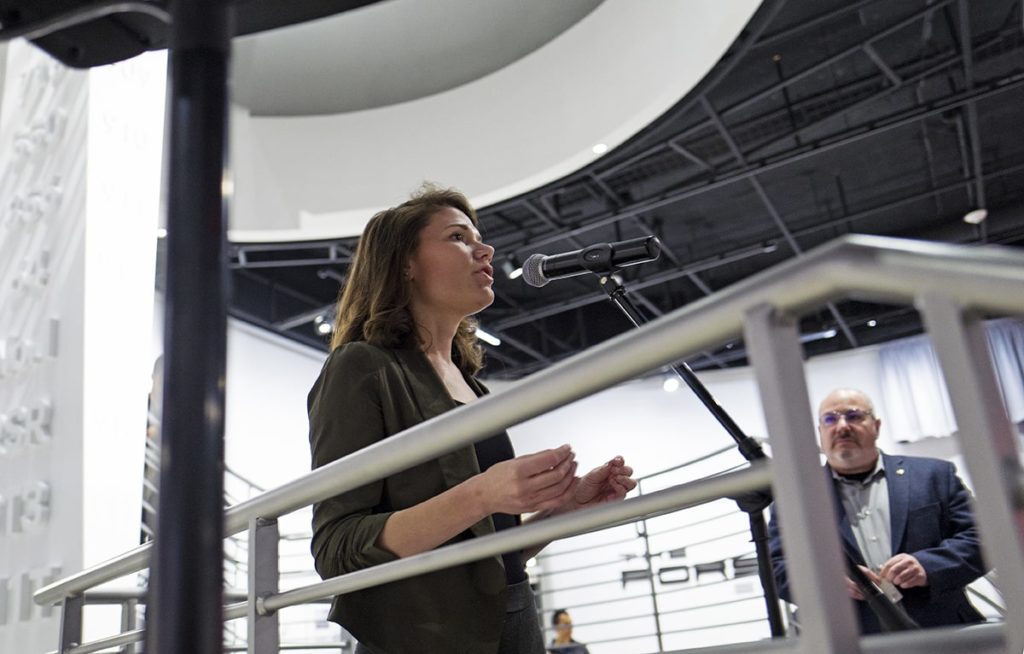
Co-curator Brittanie Kinch of the Scenic Route design firm describes “The Porsche Effect” and the thematically displayed “Word/Image/Object” section this way: “There is a phenomenon where you can go up to people who have only a distant relationship with cars, and ask them to draw a sports car. They always come up with something that looks very much like a Porsche.” Kinch believes that Porsche’s popularity in America was energized in nearby Hollywood, where Johnny von Neumann of Competition Motors sold Porsches to actors and racers including James Dean and Steve McQueen. More entertainers followed like Paul Newman, the Beach Boys, Janis Joplin, and David Crosby. This star quality helped transform Porsche into an automotive symbol in Southern California.
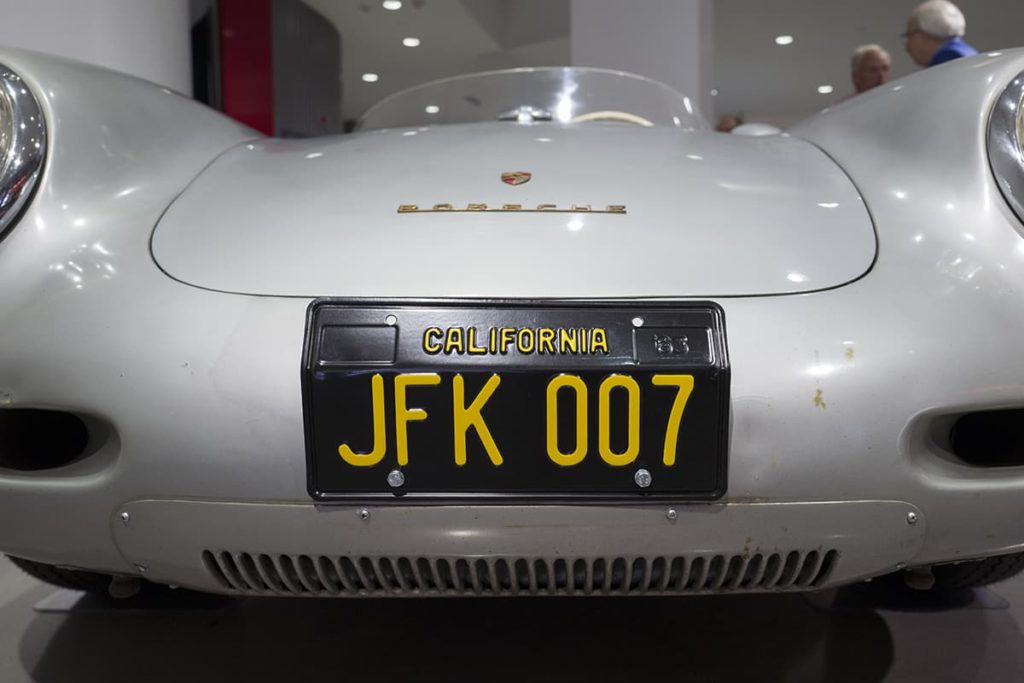
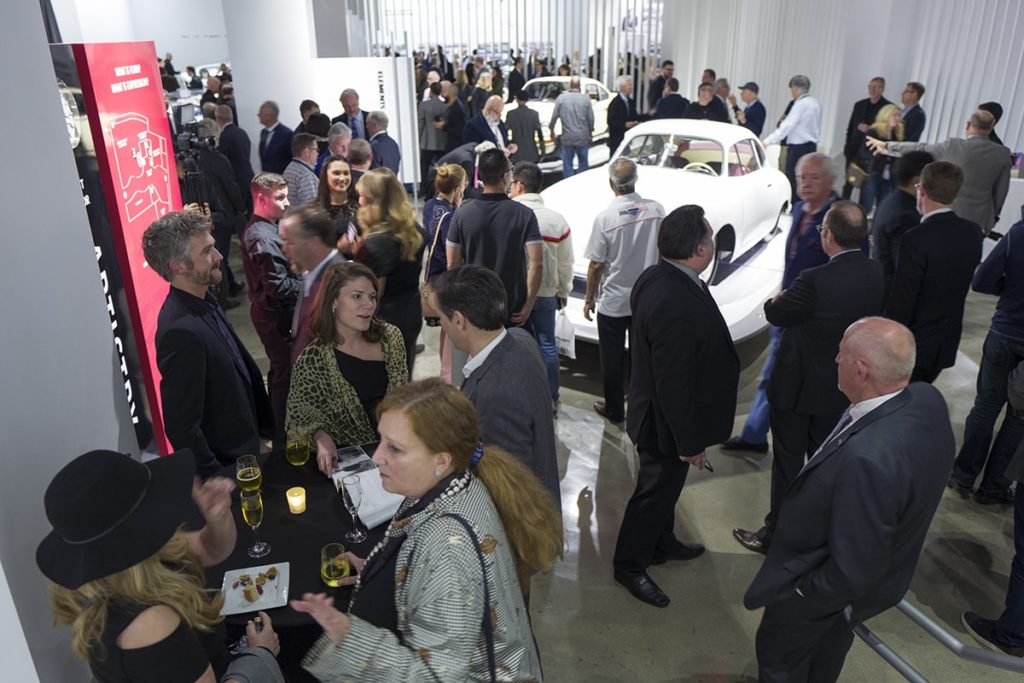
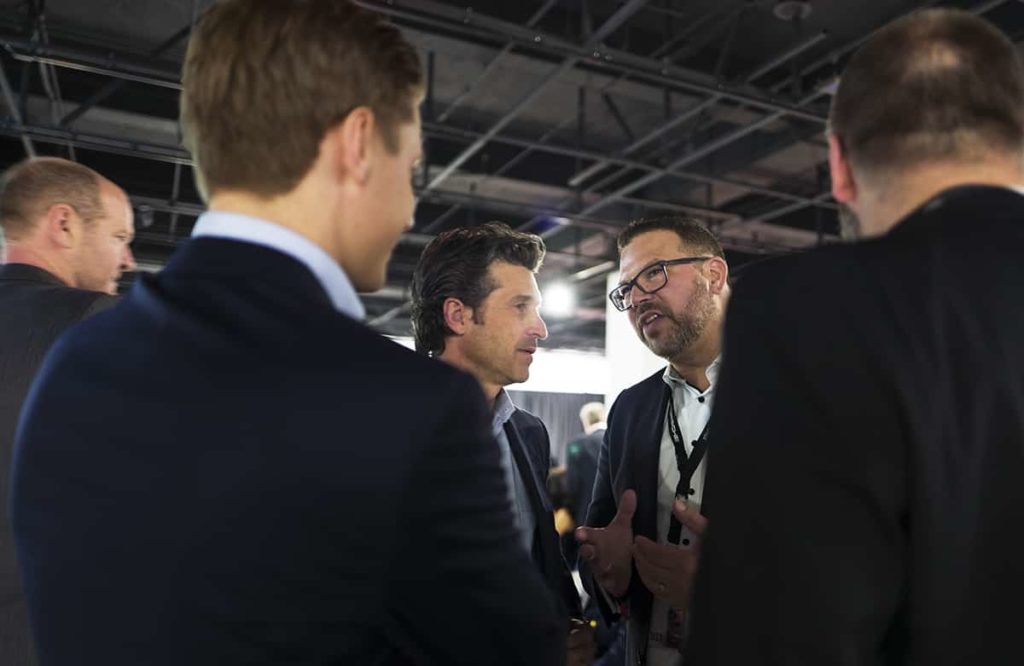
On February 1st, Petersen’s grand opening of “The Porsche Effect” celebrated this SoCal sensation. The garage that evening was bustling, and the cars being parked merely hinted at the importance of this event. Once inside, it was clear this was a worldwide gathering for Porsche. Luminaries arrived from the Porsche Museum, PCNA, and PMNA. Surrounding them were Le Mans winners, rally champions, collectors, designers, and long-time enthusiasts. The atmosphere was festive and relaxed, especially in the museum’s Penthouse Lounge, where many great stories and friendships were rekindled.
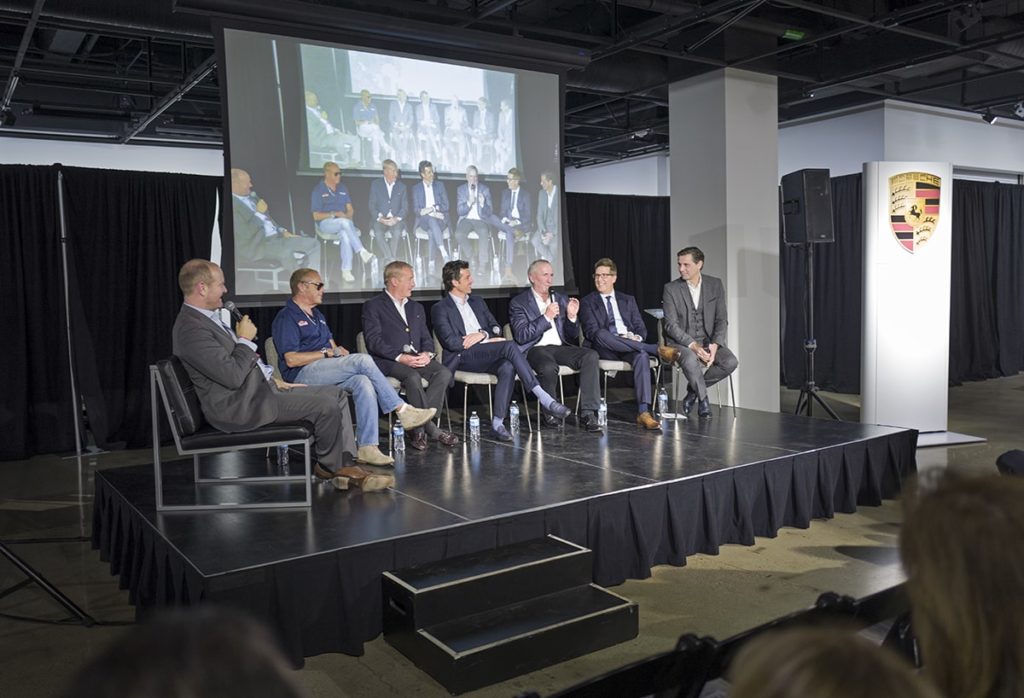
The panel discussion was held on the second floor. There, famed racer Tommy Kendall introduced the panelists: Chad McQueen, Hurley Haywood, Patrick Dempsey, Jeff Zwart, and Spike Feresten. Klaus Zellmer, CEO of PCNA, was keynote speaker and a panelist. He announced, to much applause, that California accounts for one fourth of the Porsches sold in the USA – making it their fifth largest market in the world. Perhaps the highlight of the discussion was a trip down memory lane where each panelist talked about their “first Porsche” experience. For McQueen it was his father’s Porsches. He recalled thinking “This isn’t Mom’s Cadillac,” when riding in Steve McQueen’s Black Speedster and Slate Gray 911S. Amazingly, Chad still has those cars. Five-time Daytona winner Haywood remembered a dark green 356 that his uncle had brought to the U.S. early on. Patrick Dempsey revealed he initially wanted to be a ski racer, then found acting to be his passion, and ultimately spent his first big paycheck on a Speedster that was used for the audio track in the movie “Top Gun”. He still owns it today.
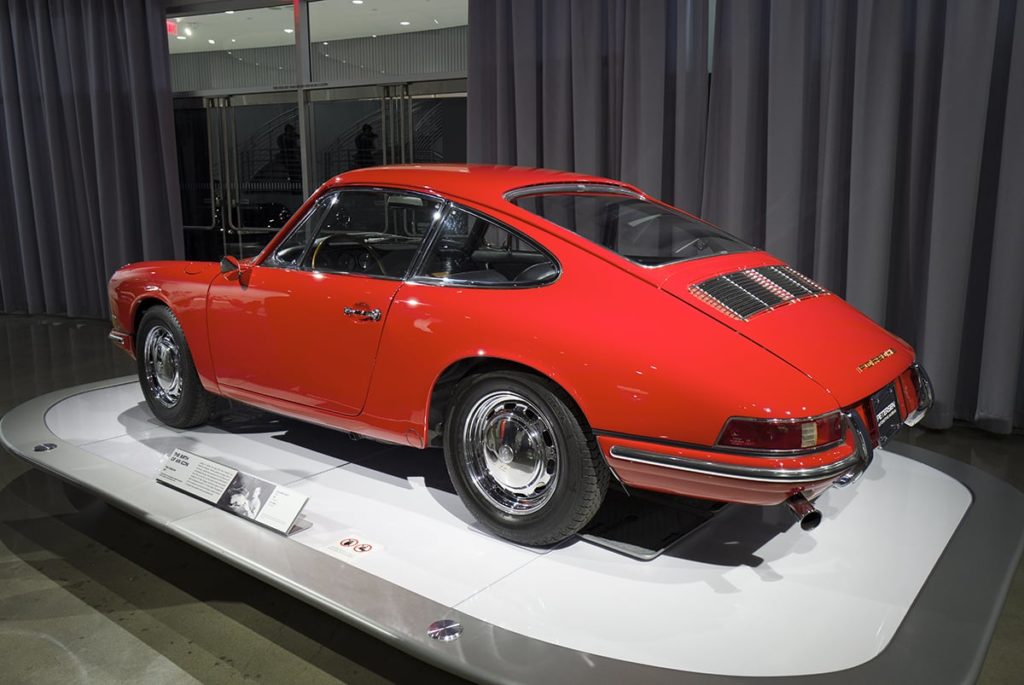
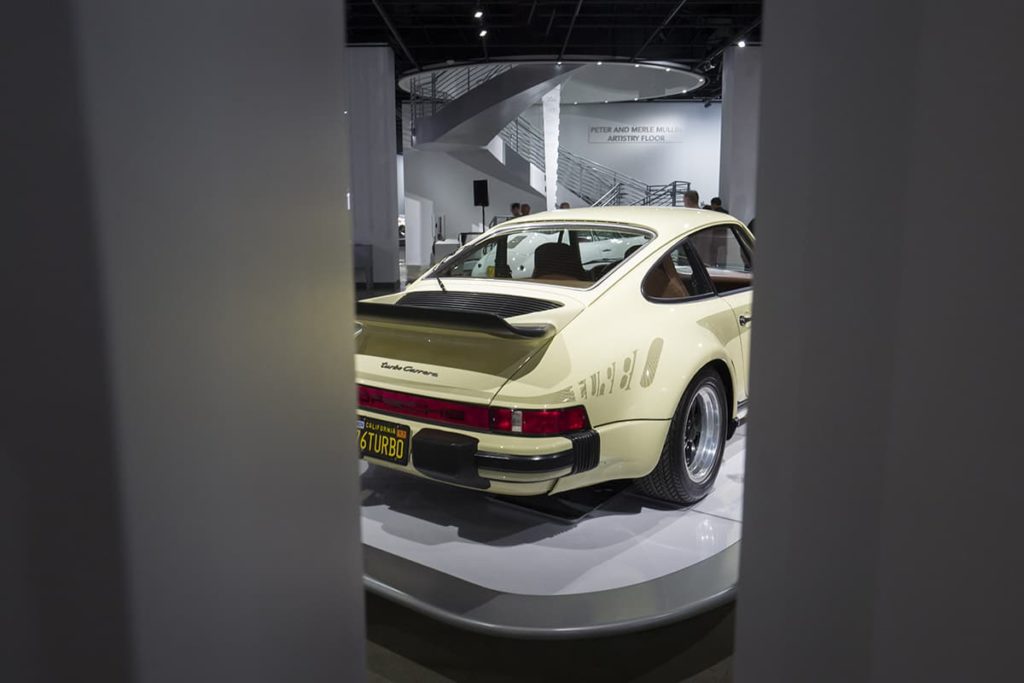
Racer and filmmaker Jeff Zwart recalled his first driving lesson in his father’s Porsche 901 #35 in the mid-‘60s. It was selected because it had more torque than the family Beetle. He’s still searching for that car today. Seinfeld show writer Feresten was introduced to Porsches not through Jerry but David Letterman. After a brief fling with Italian sports cars, he bought a Porsche 1980 911 SC, like the one in Letterman’s collection. For PCNA’s Klaus Zellmer it was a red 959 parked near Stuttgart that started his Porsche love affair. Enlivened by these personal narratives, the L.A. gathering walked to a ribbon cutting ceremony and then descended a spiral staircase to the special exhibit in the Mullin Grand Salon on the main floor. The first car visible from the balcony was an inky black shape that represented Porsche’s beginnings. This 1939 “Berlin-Rome” Type 64 was Porsche’s first sports car, and it remains an exceptional and mesmerizingly elegant design. For reference, it is one of three built very early in Porsche’s history. The first Porsche built road car was 356 #1, registered in 1948.
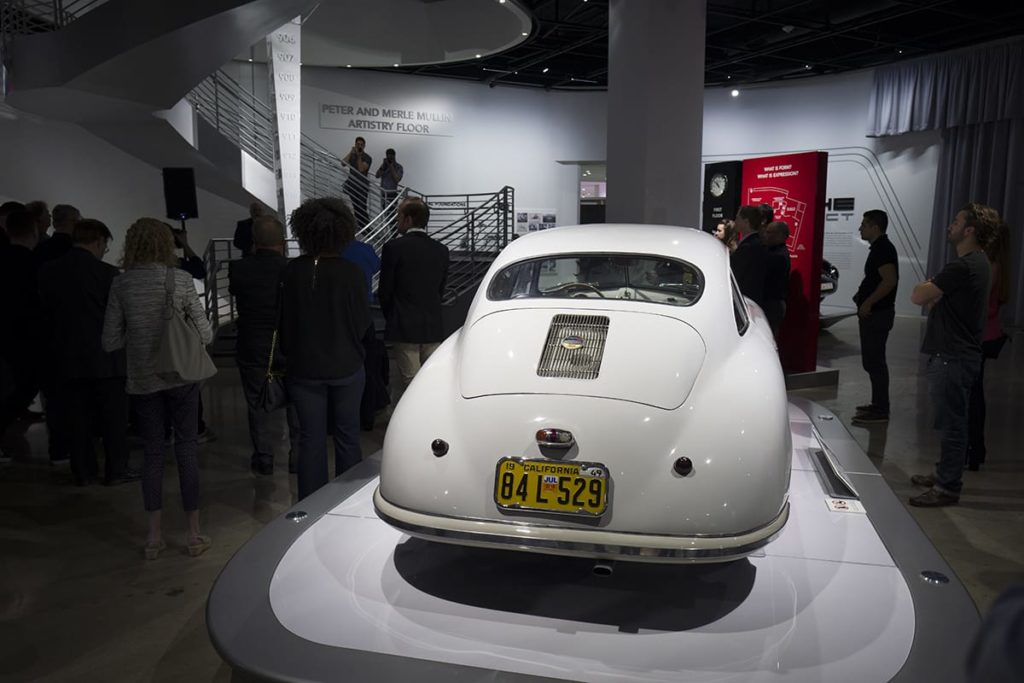
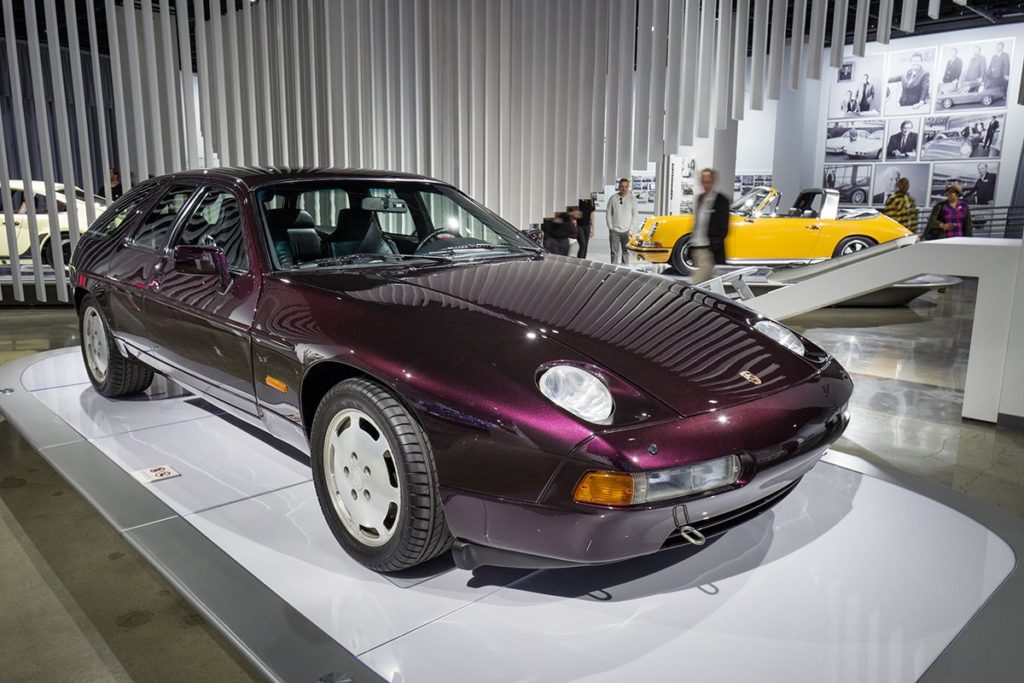
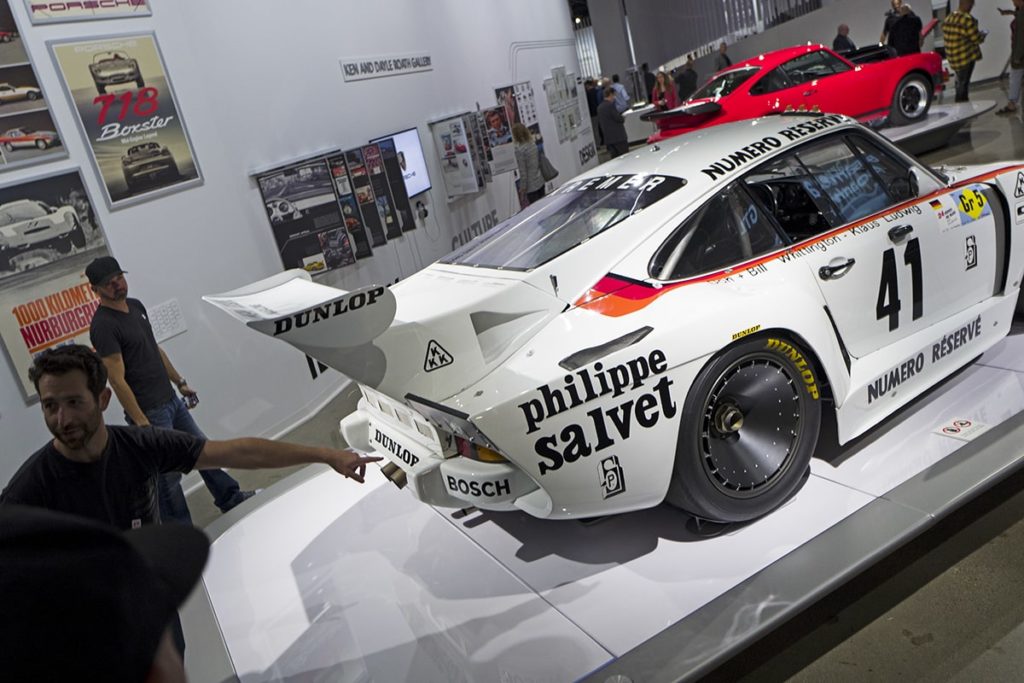
A little further down the stairs, Zwart’s charming 1949 Porsche 356-2 Gmünd Coupe in light gray was visible. Just beyond there’s a dark gray 356 Continental Cabriolet built for the U.S. market. Around the corner is a rare 1987 928, the seldom-seen H50 Study. It’s a four-door, hatchback prototype on loan from the Porsche Museum. Videos, giant illustrations and rare posters decorate the walls. Displays of significant memorabilia, factory archival drawings, and unusual products from Porsche Design fit between the cars.
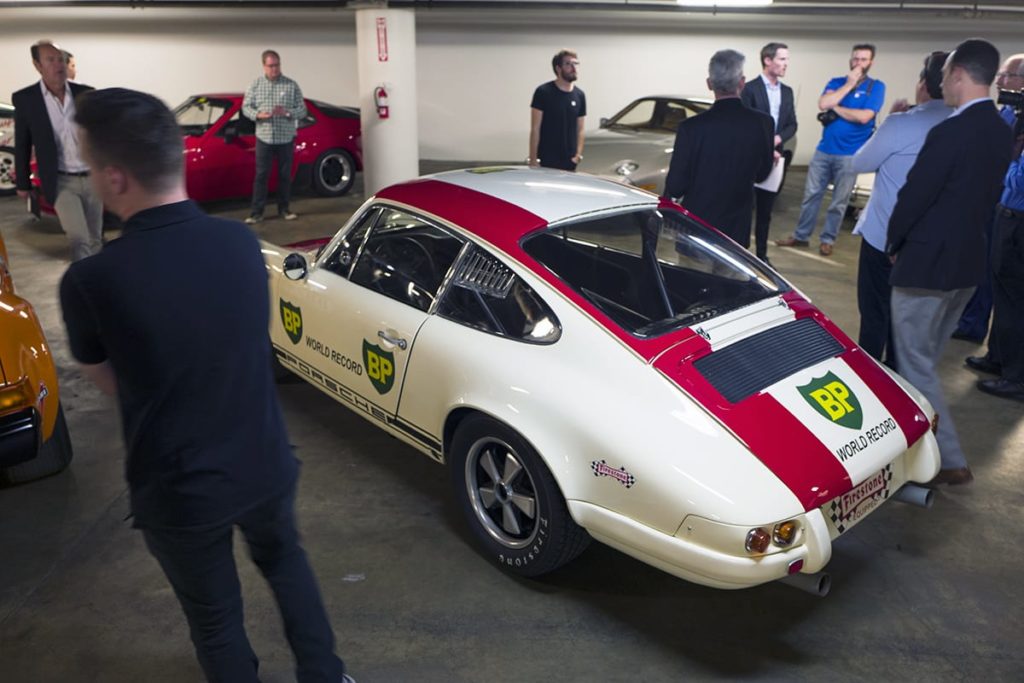
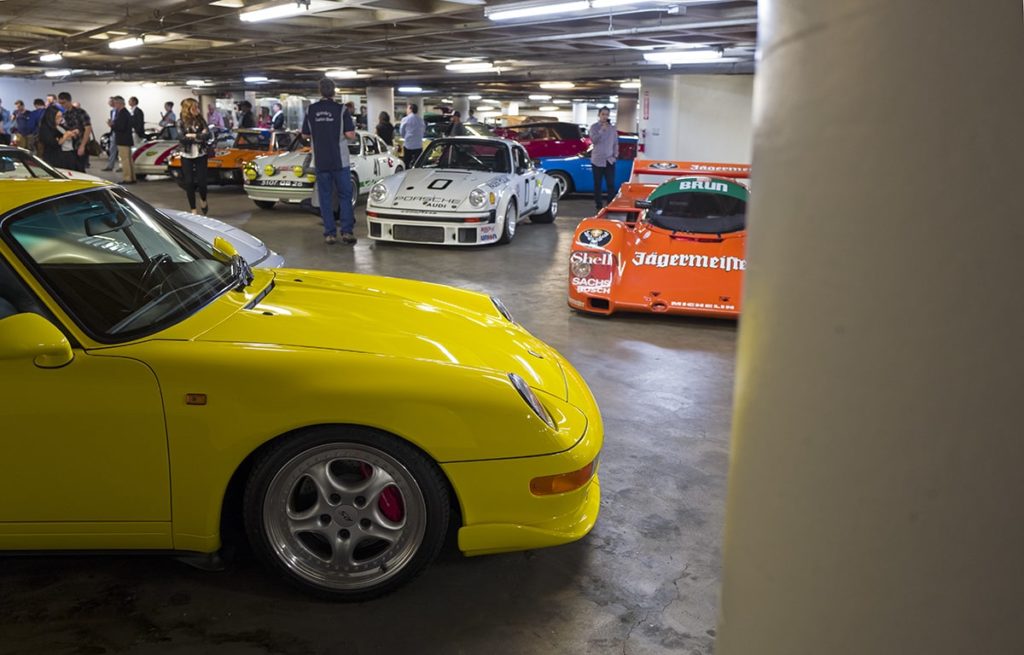
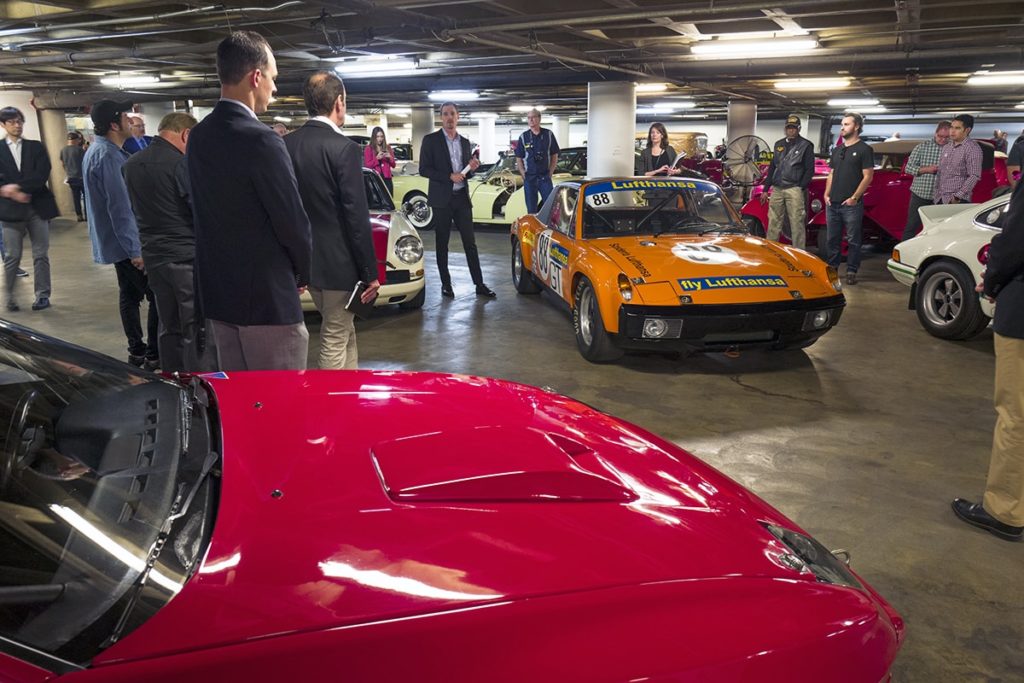
That evening included a tour of “The Vault” in the Petersen basement. There, visitors have the opportunity to experience even more Porsches. Some are one-of-a-kind models that were brought to the museum specifically for this exhibit. In all, there are more than 20 racing Porsches on display, including a 550 Spyder, Porsche’s 906 and 910, a Gulf 917K, the Sunoco 917-30 Can-Am Spyder, Bruce Meyer’s Le Mans winning 935 K3, a Jägermeister 962C, one of the 1985 Paris-Dakar 959s, a pair of Porsche 911 GT1s (one for the street and one for the track), a more recent RS Spyder, and a very recent Le Mans winner – the 919 LMP1 Hybrid. Porsche’s unsurpassed racing history is their ace-in-the-hole and one of the reasons for their enduring success.
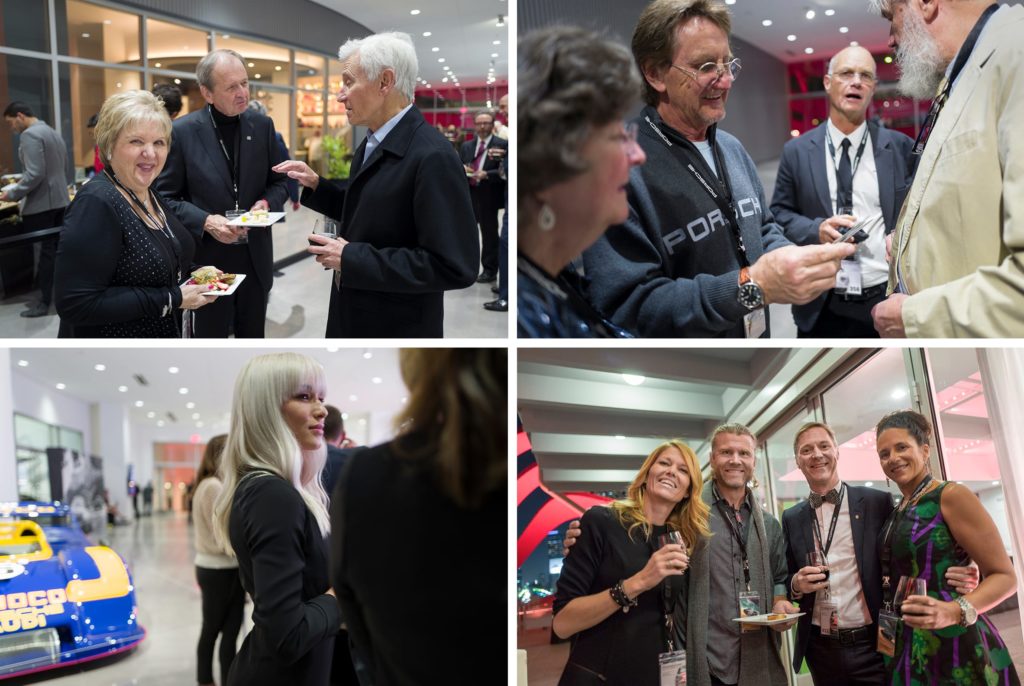
Certainly there were whispers of the electric Mission-E Porsche and driverless cars. But, the main focus and reasons for the palpable excitement were iconic vehicles representing Porsche’s innovation over the past seven decades. “The most comprehensive gathering of historic Porsche cars ever assembled outside of Germany” is how the museum describes it. It’s a show guaranteed to instill “The Porsche Effect” in every fan who visits. For tickets go here: https://petersen.org/portfolio-item/the-porsche-effect/ My special thanks to Brittanie Kinch and the entire Petersen team for their support. –RW
Here’s a list of the 50 Porsches currently on exhibit at the Petersen Automotive Museum: 1939 Porsche Type 64 60K10 1949 Porsche 356-2 Gmünd Coupe / Zwart
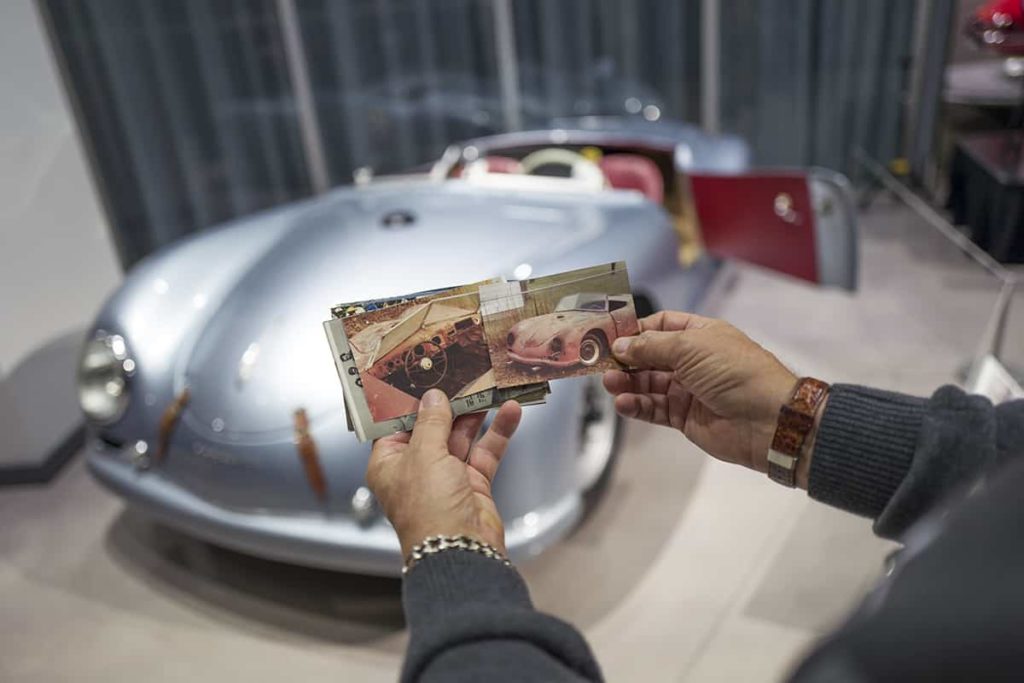
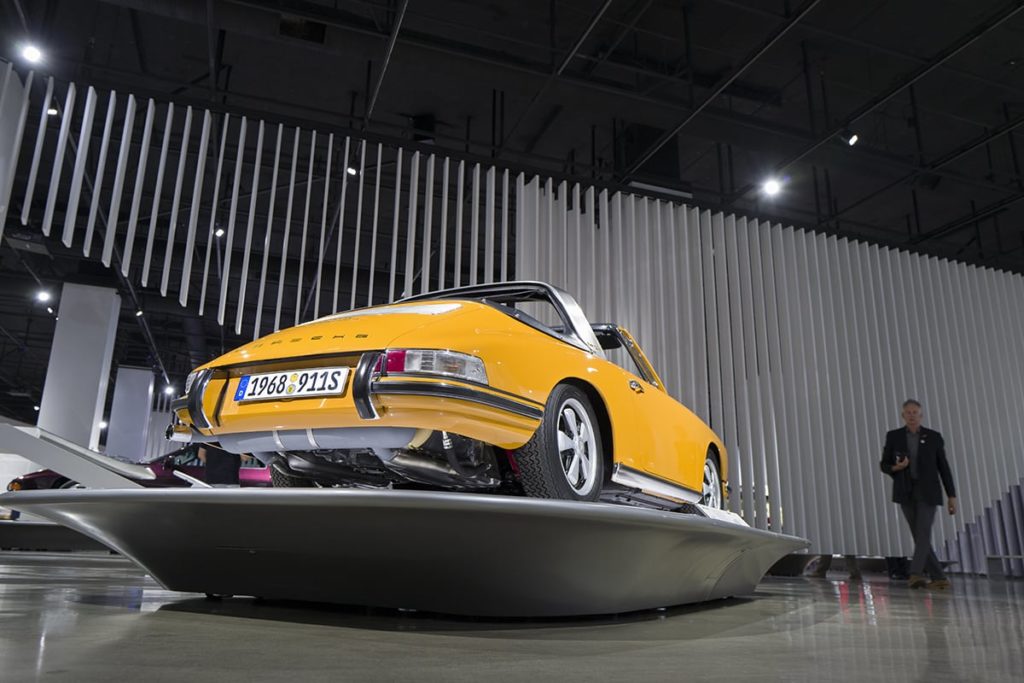
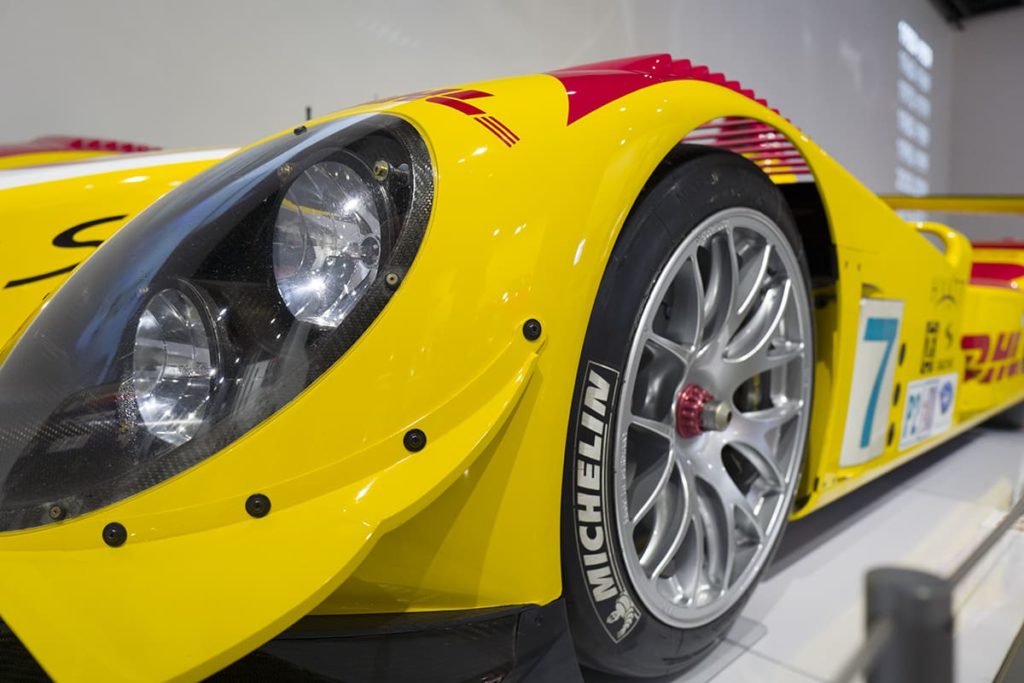
2008 Porsche RS Spyder, Chassis 802 2009 Porsche 997 RSR Art Car 2015 Porsche 918 Spyder LMP1 2015 Porsche 919 Hybrid, Chassis 1506
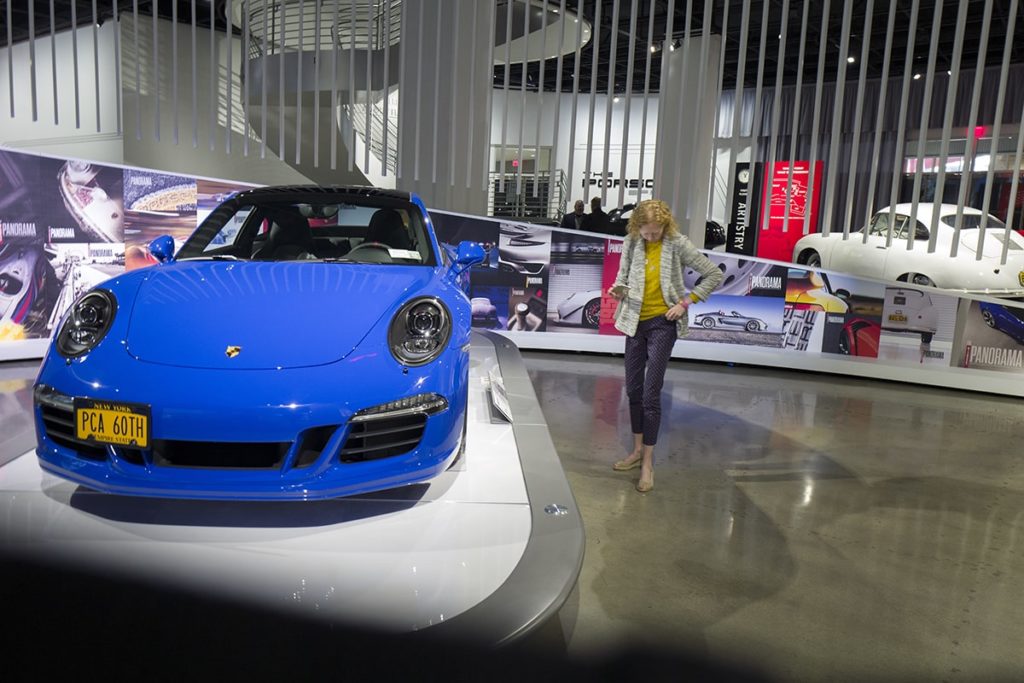
2016 Porsche 991 GTS Club Coupe and Sally Carrera Article and Photos Copyright 2018 Randy Wells. All Rights Reserved.
